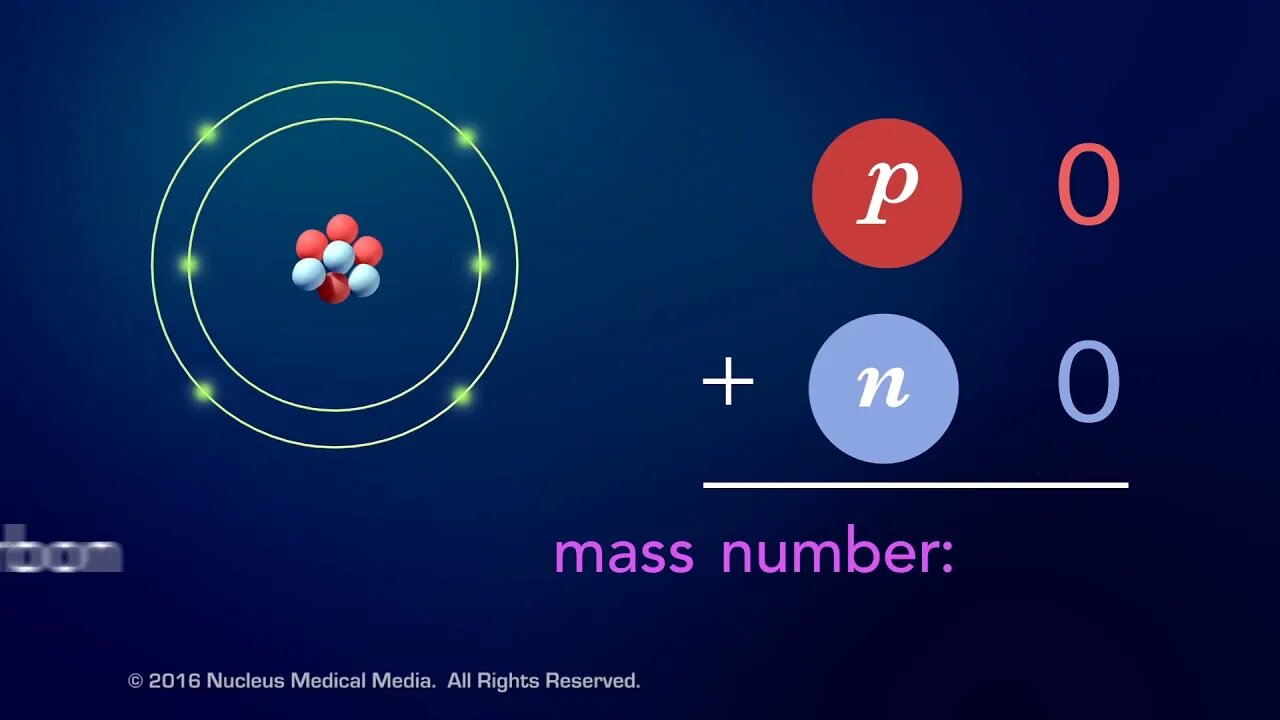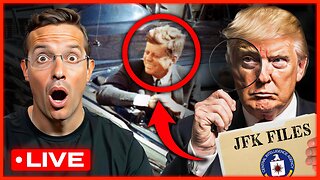Premium Only Content

Elements
For Employees of hospitals, schools, universities and libraries: download up to 8 FREE medical animations from Nucleus by signing up for a free trial at: http://nmal.nucleusmedicalmedia.com/biology_youtube
#elements #AtomicNumber #Chemistry
SCIENCE ANIMATION TRANSCRIPT: What is an element? Elements are pure substances that are made up of only one type of atom such as hydrogen, carbon, or mercury. So, what makes one element different from another? Well, it's the number of protons in a single atom of an element. This is called the element's atomic number. For example, hydrogen has one proton in its nucleus, so its atomic number is one. Carbon has six protons, so its atomic number is six. And mercury's atomic number is 80 because it has 80 protons in its nucleus. Since the nucleus contains almost the entire mass of an atom, the number of particles it contains has a big effect on the atom's mass. Each positively charged proton has a mass unit of one, and each neutral neutron also has a mass unit of one. The total number of protons and neutrons in the nucleus of an atom is called the mass number. In this example, the mass number of a hydrogen atom is one. Hydrogen is the only element that usually doesn't have any neutrons. The mass number of this carbon atom with six protons and six neutrons is 12. And the mass number of this mercury atom with 80 protons and 121 neutrons is 201. Needless to say, mercury is a match heavier element than hydrogen or carbon. Even though every atom of the same element always has the same number of protons, sometimes an element has atoms with different numbers of neutrons. Ordinary hydrogen has no neutrons, but there's a version of hydrogen with one neutron and another version with two neutrons. Atoms of the same element with different numbers of neutrons are called isotopes. The three isotopes you see here are all still hydrogen because they all have only one proton. Since neutrons have about the same mass as protons, isotopes of the same element have different mass numbers. In fact, an element's isotopes are often identified by their mass numbers. To sum up, an element is a pure substance made of atoms that always have the same number of protons. This means atoms with different numbers of protons are different elements. The number of protons in one atom of an element is called the atomic number. The number of protons plus neutrons in one atom is called the mass number. Isotopes are atoms of the same element with different numbers of neutrons. [music]
NSV16021
-
 1:45:44
1:45:44
megimu32
4 hours agoON THE SUBJECT: Make 90s Movies Great Again
23.7K5 -
 DVR
DVR
Man in America
10 hours agoAI mRNA Vaccines, Turbo Cancer & Blood Clots... What Could Go Wrong?! w/ Tom Haviland
11.2K9 -
 1:09:15
1:09:15
Precision Rifle Network
1 day agoS4E3 Guns & Grub - Trump a new era for gun rights?
11K3 -
 1:05:31
1:05:31
Glenn Greenwald
5 hours agoSection 702 Warrantless Surveillance Ruled Unconstitutional: Press Freedom Advocate Seth Stern Explains; The Rise of Unions & the Impact of Trump's Populism with Author Eric Blanc | SYSTEM UPDATE #395
62.2K77 -
 1:01:13
1:01:13
The Amber May Show
4 hours ago $0.08 earnedWomen Of Rumble | Amber, Kelly and Wendy Wild
17.8K2 -
 1:16:38
1:16:38
Josh Pate's College Football Show
6 hours ago $0.61 earnedCFP Title Viewership | JP Poll Under Attack | Bama & Oregon Season Grades | Most To Prove In 2025?
22.5K -
 LIVE
LIVE
VOPUSARADIO
10 hours agoPOLITI-SHOCK! "THE TIDE IS TURNING"! 3 SPECIAL GUESTS JOINING US TONIGHT!
103 watching -
 52:47
52:47
Kimberly Guilfoyle
8 hours agoDismantling DEI Once and For All, Live with Tyler O’Neil & Eric Deters | Ep.190
83.5K32 -
 1:34:59
1:34:59
Redacted News
7 hours agoBREAKING! TRUMP SIGNS ORDER TO RELEASE JFK FILES, CIA IS FURIOUS | REDACTED NEWS
204K368 -
 1:36:09
1:36:09
Benny Johnson
8 hours ago🚨WATCH: President Trump Declassifies JFK, RFK, MLK Files LIVE Right Now in Oval Office, History Now
156K278